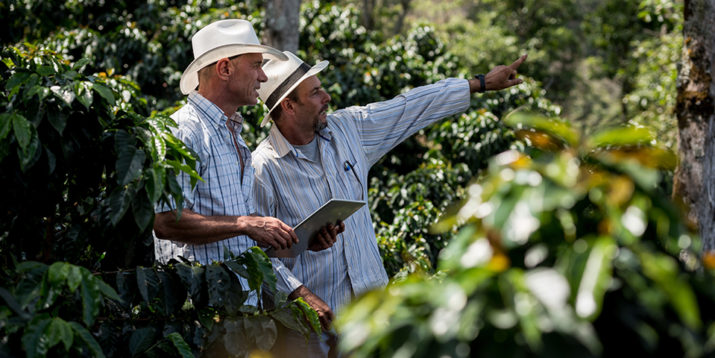What Is Sustainability? Check Out This Handy Glossary

What is “sustainability”? Essentially, it’s a producer and consumer’s version of a physician’s Hippocratic Oath: First, do no harm — in this case, to the environment.
Way more than a buzzword, it’s an ethos you can actively apply to your everyday life via:
- the groceries you buy
- the restaurants you patronize
- the businesses you support
- the products you use
Here’s a glossary of some of the most important sustainability terms, starting with the concept itself.
What Is Sustainability?
“Sustainable agriculture practices have the ability to increase food production without increasing environmental degradation,” explains Dana Ellis Hunnes, Ph.D., M.P.H., R.D., a senior dietitian at RR-UCLA Medical Center and author of the upcoming book Recipe for Survival: What You Can Do to Live a Healthier and More Environmentally Friendly Life (Cambridge University Press).
Among other things, sustainable farmers work to improve the soil — reducing erosion and improving its ability to store water and nutrients — by using organic and regenerative farming techniques, such as composting.
“Foods are considered to be sustainable when growing them can be done without compromising economic, ecological, or socio-political needs,” says Hunnes.
That ethos applies to the producers and manufacturers of other products as well.
Pro tip: Read more about BODi’s commitment to sustainability, fair-trade practices, and quality in the production of Shakeology.
1. Carbon footprint
According to the Center for Sustainable Systems at the University of Michigan, a carbon footprint is the total greenhouse gas emissions caused directly and indirectly by an individual, organization, event, or product.
Food accounts for 10% to 30% of a household’s total carbon footprint, 68% of that from food production and 5% from transportation.
Meat has a much higher carbon footprint than plant products.
2. Composting
“Composting is a natural process of rotting or decomposition of organic matter,” says Hunnes.
Crop residues, animal waste, food discards, and other fibrous materials (such as paper) are gathered and allowed to decompose, then used as fertilizer for new crops.
“This increases the uptake of healthy nutrients — such as vitamins, minerals, and other bioactive compounds — into crops themselves, and decreases or eliminates the need for inorganic fertilizers, pesticides, and herbicides,” she explains.
3. Fair-Trade
This is both a social and environmental aspect of sustainability, aimed at helping farmers and manufacturers in developing countries.
“The basic tenet of fair-trade is that it supports responsible companies, empowers farmers, workers, and fishermen, and protects the environment by paying workers a fair price for the product and the work they do, regardless of the volatility in market prices,” says Hunnes. “Fair-trade producers tend to engage in environmental stewardship, prohibiting the use of harmful chemicals and taking measures to protect and regenerate natural resources.”
4. Green products
The definition of a green product is sort of diffuse and murky. (This enables greenwashing; see below.)
After studying a range of interpretations of the term, researchers writing in a 2019 issue of Journal of Economic Surveys proposed this overarching definition: “A product (tangible or intangible) that minimizes its environmental impact (direct and indirect) during its whole life cycle, subject to the present technological and scientific status.”
5. Greenwashing
When a manufacturer takes advantage of the ambiguous definition of “green products” to pass their product off as environmentally responsible when it really isn’t.
6. Locally grown
“Local food markets typically involve smaller farms that grow or raise a variety of products and have short supply chains,” says Hunnes. “Farmers often perform all of their own marketing functions including the storage, packaging, transportation, distribution, and advertising of their products.”
The benefits of local food systems include enhancing employment and income within their communities and reducing the amount of energy required and greenhouse gases emitted to transport products from farm to market.
7. Locavore, or Localvore
Someone who eats only locally grown foods.
8. Organic
“Organic farming prohibits the use of synthetic fertilizers and pesticides, requires certification bodies to certify producers based on a set of production standards,” says Hunnes. “(It) tends to rely more on healthy living systems, taking advantage of biological diversity and the recycling of nutrients.”
9. Regenerative Farming
A step beyond sustainable farming, regenerative farming aims to produce food with the least amount of harm to ecosystems, animals, or humans. It is often organic or nearly organic.
“Regenerative farming is proposed as a solution to the environmental ills of conventional farming by reducing, if not eliminating entirely,” says Hunnes. “The use of phosphorous- and nitrogen-rich fertilizers and other toxic chemicals, which are harmful to the environment and health.”
10. Renewable Energy
According to the National Resources Defense Council (NRDC), renewable energy, often referred to as clean energy, “comes from natural sources or processes that are constantly replenished.” For example, the sun and the wind.



